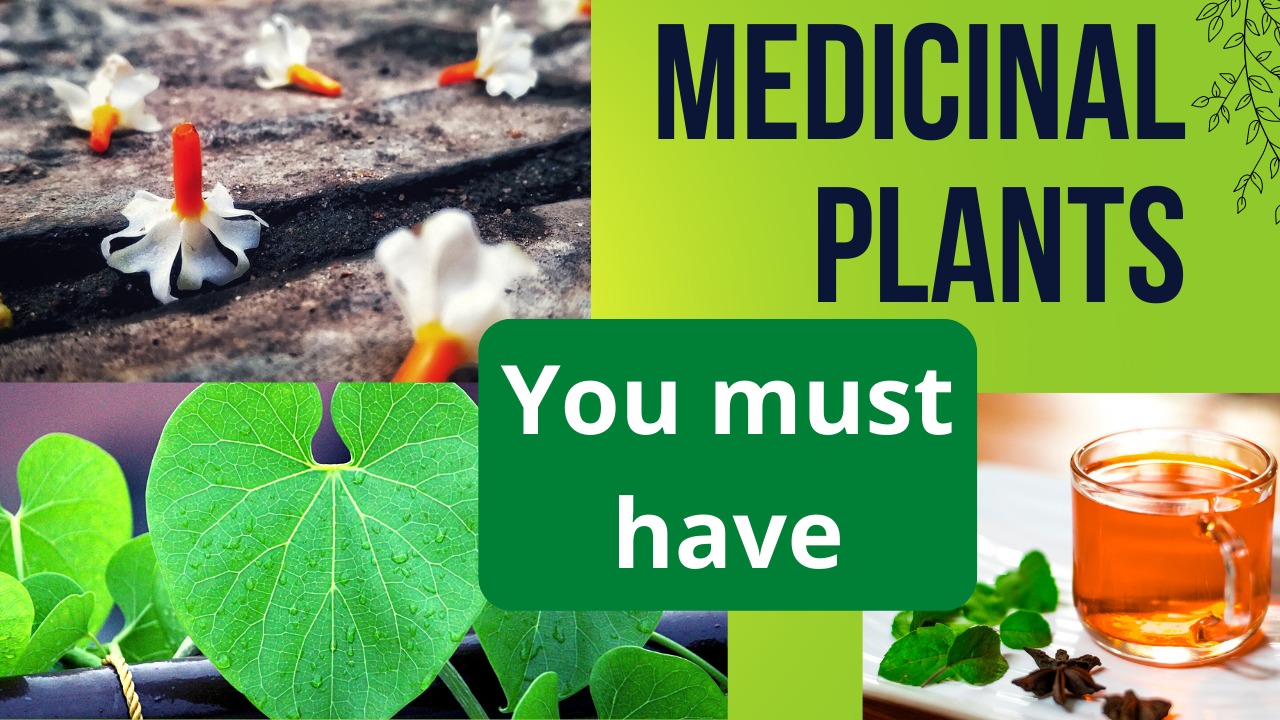Nature has bestowed upon us countless wonderful plants. The more you acquaint yourself with them, the more they will amaze you. These plants are not only a source of fruits, flowers, leaves, vegetables, and oxygen but also a treasure trove of Ayurvedic medicines.
Ayurveda incorporates certain medicinal plants and herbs that can effectively treat or cure many health problems, contributing to our overall well-being. These plants have been an integral part of Indian tradition, serving various medicinal purposes since ancient times.
Let’s explore medicinal plants that you can cultivate at home to alleviate a wide range of health issues.
1. Tulsi (Holy Basil)
Tulsi is a sacred plant blessed with numerous medicinal properties, and it is almost found in every home.
- Tulsi has therapeutic qualities for many ailments and discomforts.
- Holy Basil also serves as a natural mouth freshener.
Medicinal benefits of Tulsi (Holy Basil)
- Cough, cold, sore throat, headache, congestion, psychological stress, and many other discomforts can be treated by drinking a decoction made from the leaves of this mystical plant.
- These leaves can be added to tea or consumed in liquid form.
How to make a decoction of Tulsi?
- Take some leaves and 1 liter of water in a pan.
- Let it boil till the quantity of water reduces to half.
- Sieve it and drink it empty stomach.
2. Giloy
Giloy, also known as Tinospora cordifolia, is commonly referred to as the heart-leaved moonseed.
Giloy has been used as a medicine in Ayurveda for centuries and has provided significant assistance during the Covid-19 pandemic.
- It is also known as Amrita and is believed to have the extraordinary power to cure all three doshas – Vata, Pitta, and Kapha.
Giloy requires support to grow and naturally wraps itself around different trees as it climbs.
- In this process, it acquires some of the beneficial traits of the supporting plants as well. That’s why Giloy climbing on a Neem tree is considered the best.
Medicinal benefits of Giloy
- Fever, jaundice, acidity, indigestion, asthma, cough, and many cases of flu can be alleviated by Giloy.
- While all parts of this plant, including the leaves, bark, stems, and roots, can be used for medicinal purposes, the stems have gained the most popularity.”
How to use Giloy as a medicine?
- Take a stick, whether it’s soft or hard, that’s about an inch long.
- Cut it and crush it thoroughly.
- Boil it in half a liter of water until the water reduces to half its original quantity.
- Sip it with sugar candy (mishri) after the temperature comes down to a drinkable state
3. Aloe Vera
Aloe Vera stores water in its fleshy leaves, which is why it can thrive even in very dry conditions.
- Due to its numerous benefits, it is used in almost every household.
- This succulent plant offers a variety of cosmetic benefits, and many major brands profit from it by creating cosmetic and beauty products.
Medicinal benefits of Aloe vera
When discussing the medicinal properties of aloe vera, it is notable for its antiseptic, antibacterial, anti-inflammatory, and various other properties.
- Additionally, it contains essential nutrients such as vitamin A and folic acid.
- Aloe vera adds a natural glow to the skin and shine to the hair.
- Aloe vera gel can be directly applied to the body for moisturization.
- It also has cooling effects and can be applied to the body to relieve sun tanning and prevent heat strokes.
- Aloe vera acts as an ointment for burnt skin, aiding in the healing of burned areas without leaving marks or scars.
- Some people drink aloe vera to purify the blood on a daily basis
Continue reading Medicinal Plants: Benefits and Uses (Part 1)
